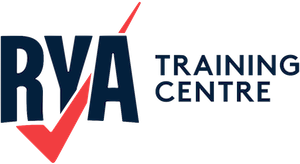International Convention on Standards of Training, Certification, and Watchkeeping for Seafarers (STCW)
A global agreement established by the International Maritime Organisation (IMO) to ensure seafarers are properly trained, certified, and competent to perform their duties on board ships.
The STCW Convention was first adopted in 1978 and came into force in 1984, marking the first time minimum international standards for seafarers’ training, certification, and watchkeeping were established. Before the STCW, standards for seafarers varied widely between countries, leading to inconsistencies in the quality of training and the competence of seafarers—the convention aimed to standardise these requirements to improve safety at sea and protect the marine environment.
The convention applies to all seafarers working on ships flagged by countries that are signatories to the STCW, regardless of where the ship is operating. It covers a wide range of maritime roles, including deck officers, engineers, and other crew members who are responsible for the safety of the ship and its passengers and the protection of the marine environment.
The STCW Convention sets out the minimum standards of competence that seafarers must meet, and these standards are periodically updated to reflect changes in technology, regulations, and best practices in the maritime industry. The most significant update to the convention came in 1995, with the adoption of the STCW Code, which provides detailed guidelines on how the standards should be implemented. Another major revision, known as the “Manila Amendments,” was adopted in 2010 to address emerging challenges in the industry, such as the need for training in modern navigation systems and environmental protection.
The convention is divided into two parts: the STCW Convention, which outlines the basic requirements, and the STCW Code, which provides more detailed technical standards and guidelines. The STCW Code is further divided into two parts: Part A, which contains mandatory standards that all signatory countries must follow, and Part B, which contains recommended guidelines that countries are encouraged to follow but are not legally binding.
Key areas covered by the STCW include:
- Training and Certification: The convention specifies the minimum training requirements for different categories of seafarers, including officers, engineers, and ratings. It also sets out the conditions under which certificates of competency are issued, ensuring seafarers have the necessary skills and knowledge to perform their duties safely and effectively.
- Watchkeeping: The STCW establishes guidelines for watchkeeping arrangements, ensuring that ships are properly manned at all times and that crew members are adequately rested to avoid fatigue-related accidents. This includes specific requirements for the composition of the bridge and engine room watches and the duties of watchkeeping personnel.
- Medical Fitness: The convention requires seafarers to undergo regular medical examinations to ensure they are physically and mentally fit to perform their duties on board. This includes specific standards for eyesight, hearing, and general health.
- Safety and Environmental Protection: The STCW emphasises the importance of safety training, including firefighting, first aid, and survival techniques. It also includes provisions for training in environmental protection, such as preventing pollution from ships and responding to oil spills.
- Competency Assessments: Seafarers must demonstrate competence through written exams, practical tests, and onboard evaluations. These assessments ensure that seafarers have the necessary skills and knowledge to perform their duties under international standards.
By adhering to the STCW Convention, countries help ensure that seafarers are adequately trained and competent. This, in turn, enhances safety at sea, reduces the risk of accidents, and protects the marine environment.


